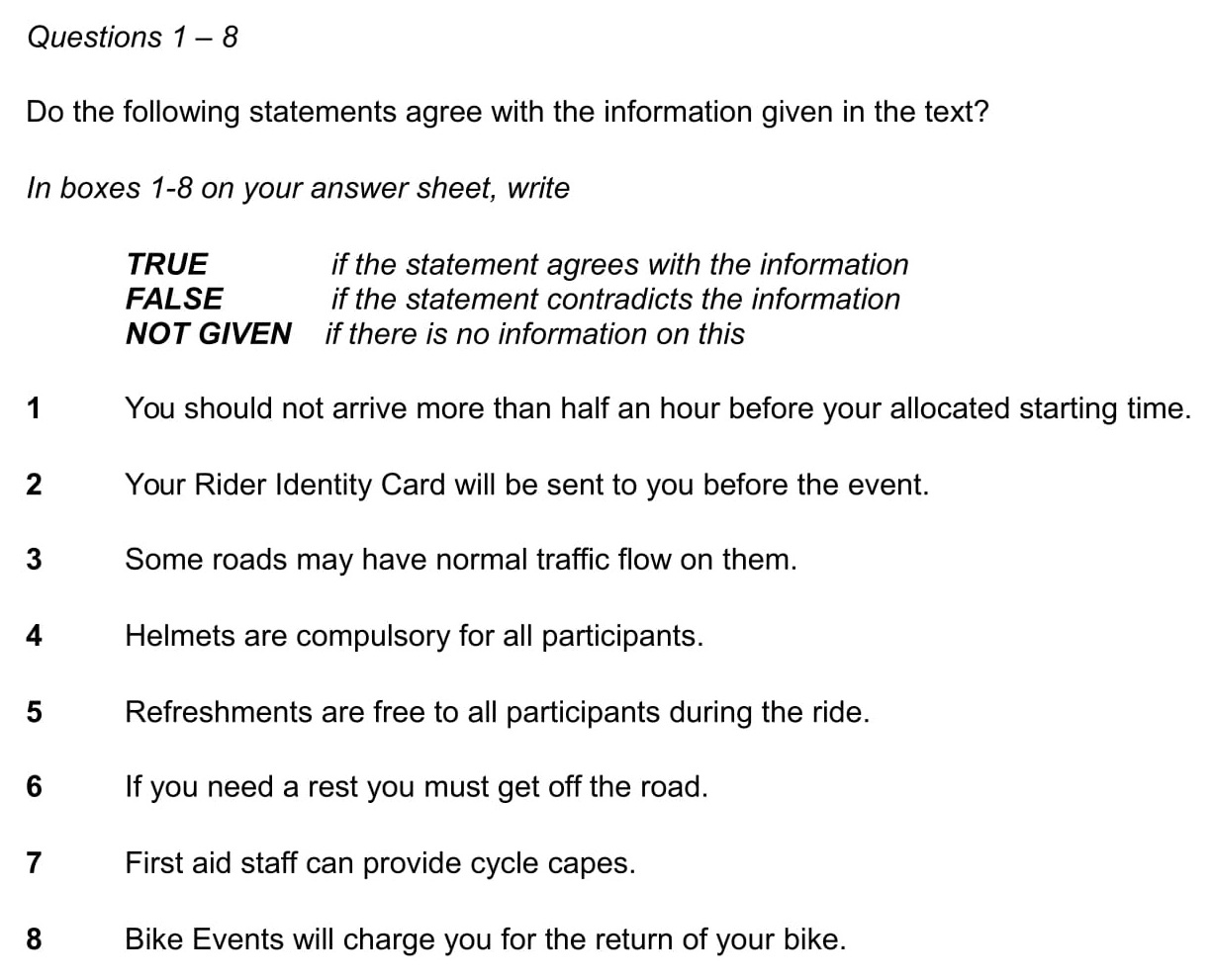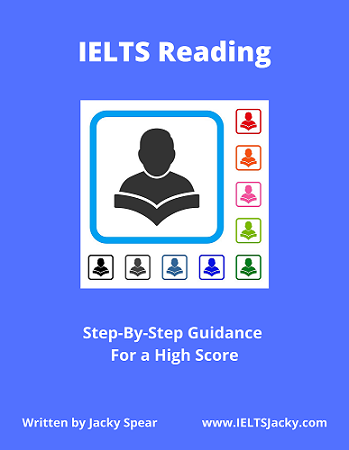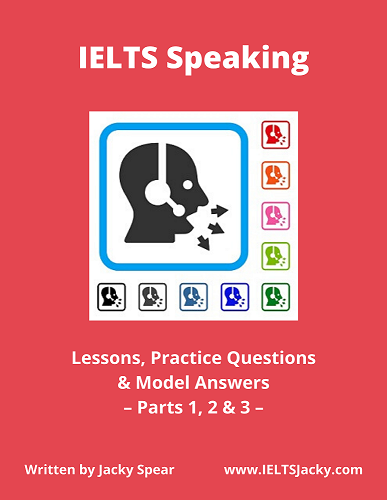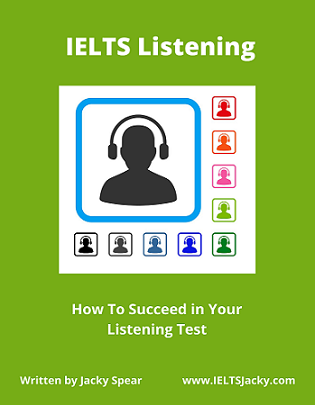IELTS Reading Sample
How To Answer a True, False, Not Given Question
This IELTS Reading sample is a True, False, Not Given (T/F/NG) question. These come up regularly in the IELTS Reading test. Many students find them challenging so it’s important to understand and practice them.
On this page, I’m going to show you how to answer a real test question step-by-step.
I’ve also written a whole page on True, False, Not Given Questions that’s full of information and tips and has another IELTS reading sample explained in detail. Click the link to visit the page.
It includes:
- Explanation
- The big challenge
- Difference between T/F/NG & Y/N/NG questions
- 8 Top tips
- Proven strategy
- Examples & model answers
Here are just a few key things from that page that I want you to know before we start work on our question.
Explanation of T/F/NG questions
For T/F/NG questions, you will be given a set of statements and a text. Your task is to decide which of the following applies to the information in each statement:
- it agrees with the information in the text – TRUE (F)
- it disagrees with it or contradicts it – FALSE (F)
- it is not mentioned in the text – NOT GIVEN (NG)
The Big Challenge
The challenge with a T/F/NG type question is that for some statements, the NOT GIVEN ones, you will be searching for information that’s not there.
It’s very easy to waste a huge amount of time going over and over the text to check that you haven’t missed the information.
Answer Types
There will be at least one of each answer type – True, False and Not Given. So, if you don’t have at least one of each when you’ve completed the question, you’ve made a mistake.
IELTS Reading Sample for True, False, Not Given
So, let’s look at our IELTS Reading sample. If you want to use it as a practice test, have a go at answering it yourself before reading my instructions.
I’ve added a PDF of the text and questions that you can download to make it easier to work on. The answers are at the bottom of this page.
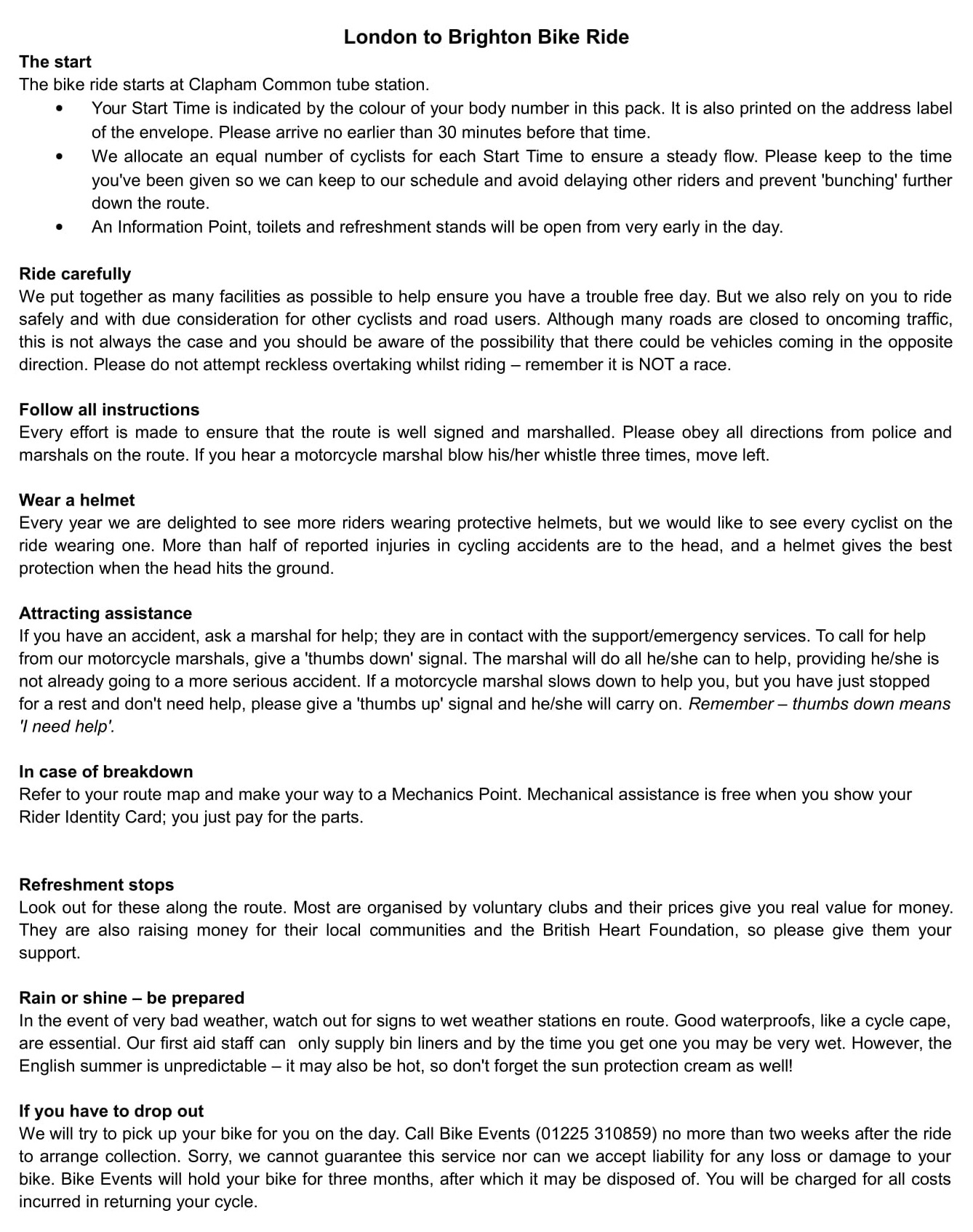
Download PDF of IELTS Reading sample.
Step-By-Step Instructions
1) Read the instructions carefully to make sure that you know what type of question it is and what you have to do.
2) Read the statements and try to understand the general meaning of each. Do this before reading the text. After reading them, you will have a good idea of what the text is about.
3) Go to the first statement and pick out one or two key words to scan the text for. Note that you don’t need to read the whole text. You just need to locate the parts with the answers in.
1. You should not arrive more than half an hour before your allocated starting time.
Be mindful that synonyms and paraphrasing will very likely be used so you may not find the exact words. Also, make full use of any additional clues in the text such as headings.
Knowing whether or not the answers come in the same order in the text as the order of the questions or statements is important as well. For T/F/NG questions they do.
4) The very first paragraph has the heading ‘The Start’ so you know the first answer is probably going to be here and a quick scan easily locates the key words ‘start time’.
5) Read the bullet point in detail to find the answer.

Both synonyms and paraphrasing have been used so some interpretation is necessary. These are the ones you need to be aware of:
Statement Text
- half an hour à 30 minutes
- not arrive more than à no earlier than
However, the information is a match so the answer is TRUE.
6) Read the second statement and choose key words to scan for.
2. Your Rider Identity Card will be sent to you before the event.
Start scanning from the location of the last answer.
‘Identity card’ appears only once in the text but the information about it doesn’t relate to the statement.

Have a quick think about what synonyms might have been used such as ‘ID card’ or ‘identity documents’ and scan for these.
Neither is present so we can conclude that the information in the statement is NOT GIVEN.
7) The most obvious key word to scan for in statement 3 is ‘traffic’.
3. Some roads may have normal traffic flow on them.
It’s in the second section, entitled ‘Ride carefully’. Having identified the sentence with the answer in, read it in detail to see if the information matches.

The sentence states that not all roads will be closed and riders may encounter other vehicles, so the statement is TRUE.
8) Statement 4 also has an obvious key word to scan for, ‘helmets’.
4. Helmets are compulsory for all participants.
It’s certainly worth scanning the headings first for each key work in this IELTS reading sample and here we can quickly spot the title ‘Wear a helmet’. Scan on from here.

Yes, this is definitely the right paragraph with the word 'helmets' occurring twice. Now read it in detail, looking out for synonyms. You will also need to know that ‘compulsory’ means that it's a rule so you must do it.
We see that the word ‘riders’ is used instead of ‘participant’ but neither ‘compulsory’ nor a synonym of it are present. We’ll have to use context to discover if the information we are looking for is there.
The phrase ‘we would like to see every cyclist on the ride wearing one’ clearly indicates that not every participant wears a helmet so helmets are not compulsory. The statement is FALSE.
9) ‘Refreshments’ is the key word in statement 5. Remember to start scanning from the location of the last answer. Every little bit of time you can save is valuable.
5. Refreshments are free to all participants during the ride.
Again, we have a paragraph heading to help us.

The word ‘refreshments’ doesn’t appear in the paragraph itself but we can be confident enough that the information will be here to start reading in detail. We are looking for words that tell us either that the refreshments are free or that they’ll cost money.
The word ‘free’ is not present but ‘prices’ and ‘money’ are. Reading the sentence with these words in clearly tells us that statement 5 is FALSE.
10) ‘Rest’ is the key word to scan for in statement 6. There are only two paragraphs left in the text so it won’t take long.
6. If you need a rest you must get off the road.
Neither contains any information about taking a rest. Don’t waste more time searching. Conclude that the information is not there and that statement 6 is NOT GIVEN.
11) ‘First aid’ is probably the best key word to scan for but look out for ‘cycle capes’ as well. With just the two paragraphs left to scan, this isn’t too much to be searching for in one go.
7. First aid staff can provide cycle capes.
We are lucky. They are both present in consecutive sentences and no synonyms have been used.

The relevant information is in the second sentence which clearly states that ‘first aid staff can only supply bin liners’. Thus, they can’t provide cycle capes so the statement is FALSE.
12) This final statement takes a little more thought as to which word to select as the key word. The subject of the sentence is ‘the return’ of bikes so ‘return’ is the word to choose.
8. Bike Events will charge you for the return of your bike.
Even though there’s only one short paragraph left and you could decide to just read it to find the answer, scanning for the key word will save you precious moments so it’s still the best strategy.

The key word is, in fact, in the very last sentence so this was the right decision. The matching word in the text is a reminder to be watchful for a change in tense when scanning for verbs.
The information is easy to understand and clearly agrees with statement 8 so it is TRUE.
Answers
1 TRUE
2 NOT GIVEN
3 TRUE
4 FALSE
5 FALSE
6 NOT GIVEN
7 FALSE
8 TRUE
I hope you've found this exercise helpful. Learn all you can from it and practice answering other similar questions. This is the best way to improve your skills.
As already mentioned, I've created a full page on True, False, Not Given Questions, including another IELTS reading sample. Click the link to read it.
Like this page?
Find More IELTS Reading Samples
on These Pages
Step-by-step strategies for answering the 12 different types of IELTS Reading questions with examples and practice tests.
You'll Also Find IELTS Reading Samples Here:
IELTS Reading Samples – Matching Headings & Diagram Labelling sample tests
IELTS Reading Practice Test – More examples of Matching Headings and a Diagram Labelling questions & how to answer them
IELTS Reading Exercise – Yes, No, Not Given sample test
More Reading Test Practice – Matching Information sample test
IELTS Reading Tests – Two strategies for answering Name Matching questions
IELTS Reading Paper – Multiple Choice sample test
Reading Tests For IELTS – Summary Completion test
